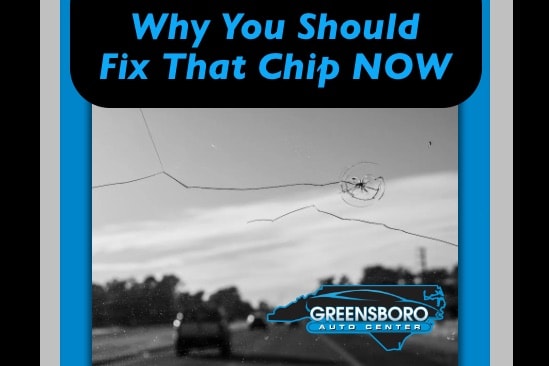
Winter’s already thrown a bit of everything at us, and with more to come we want to address an often overlooked hazard this weather brings to our cars: windshield stress. With the outside temperature fluctuations, as well as hot defrosters blowing on frozen windshields, a small chip is left to continuously flex and thus grow into an ever advancing crack, or cracks. The obvious threat is the cost of a new windshield, but there are other, important reasons to keep a structurally sound windshield in front of your face of which you may be unaware. Let’s look at why you should take that little chip seriously.
It’s More Than Just an Eyesore
Many of us consider a chip or crack to be little more than cosmetic, or at most an annoyance should it be in our eyeline, but if left unrepaired a crack can become a safety concern.
Safety First
Realizing your windshield isn’t just a piece of glass but an integral part of the car's structural integrity can be a surprise to some. Let’s look at its utility beyond keeping the wind off your face:
- Roof Support: The windshield acts as a crucial support structure for the roof, helping to prevent it from collapsing in a rollover accident. Yes, your vehicle’s side pillars are doing most of the heavy lifting here, but the windshield is factored in.
- Force Distribution: During a collision, the windshield helps to absorb, redirect, and distribute impact forces across the vehicle's structure. This aids in preventing localized damage, protecting the passenger compartment from excessive deformation.
- Airbag Deployment Path: Something else not often considered is how the windshield works in concert with your airbag systems, as it’s part of guiding the bags’ deployment path, particularly for the passenger-side. Offering a surface against which the airbag can deploy and a backstop to guide its inflation, a damaged windshield can disrupt this path, potentially leading to deployment at an incorrect angle, or even complete failure.
- Reinforced Construction: Modern windshields are not just a single pane of glass, they’re laminated, meaning they consist of two sheets of glass bonded together with a layer of polyvinyl butyral (PVB) in between. This PVB layer is more than just an adhesive, it adds significant strength and rigidity, making it a robust structural element. What you likely know about PVB is that in the event of an impact it helps hold the glass fragments together, preventing them from shattering.
We hope you learned a bit more about the importance of your windshield, and we recommend checking your insurance, as it’s often the case they’ll cover chip repair, saving you hundreds on a replacement. Should you have any further questions, you can easily contact our Service Department for more information. Stay safe out there, folks!